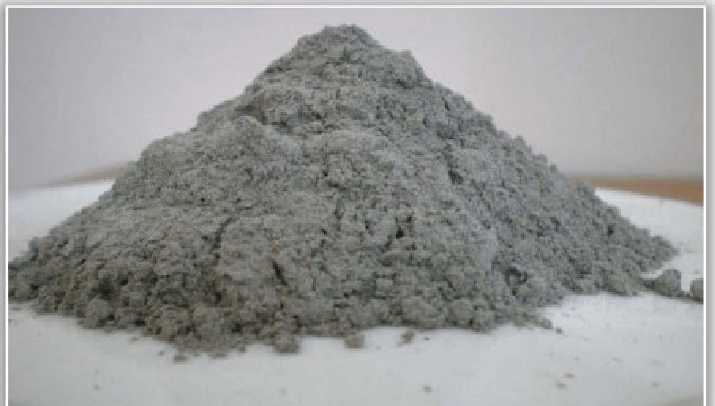Why does fly ash cause concrete foaming?

At a construction site, a large number of bubbles appeared in the concrete after pouring, and the bubbling amount was large and lasted for a long time. After hardening, the surface of the concrete forms a hollow, the overall volume increases or even cracks, and the test block left in the mixing station also undergoes volume expansion, which is significantly higher than the upper edge of the test mold. The measured air content of concrete is 10%, and the compressive strength is reduced by 30%. This abnormal phenomenon has attracted the attention of concrete production units and construction units. It is preliminarily inferred that some chemical components in the concrete raw materials have abnormal reactions and continue to generate gas. Therefore, an investigation of all raw materials was carried out.
Immediately after this abnormal phenomenon was found, various materials were extracted from the silo of the mixing building and the material yard where the batch of concrete was produced, and the trial mixing was carried out in the laboratory, and the test blocks were made, and the expansion conditions were the same. Then lock the sample and carry out the corresponding detection. First remove the sand and gravel aggregates. The detection objects are cement, fly ash, granulated blast furnace slag powder, and admixtures.
1 Fly ash generation process
Most of the fly ash in power plants is obtained from dust collection, and most of them are electric dust collection. The flue gas from the coal-fired furnace first goes through electric dust collection, and under the action of different electric fields, the fly ash of different fineness is collected and entered into different silos. The efficiency of dust collection in this link generally exceeds 95%, and the remaining high-temperature flue gas containing a small amount of fly ash enters the chimney under the action of the induced draft fan, and performs desulfurization and denitrification of the flue gas before entering the chimney. The above process is a typical fly ash generation process and desulfurization process. It can be seen that the generation of fly ash and the desulfurization process are sequential, and it is impossible to cause confusion.
2. Investigation of flue gas desulfurization process
Limestone-gypsum desulfurization process is the most widely used desulfurization technology in the world. Since the localization demonstration of 300MW units in 2002, it has entered the promotion stage in my country.
Ammonia flue gas desulfurization process uses ammonia (waste ammonia water, liquid ammonia, ammonium bicarbonate or ammonia water, etc.) as raw material, recovers SO2 in flue gas, and produces high-value fertilizers. The cost of desulfurization raw materials can be fully deducted from the recovered products. , will also produce certain economic benefits. Low investment, low operating cost, no secondary pollution, no waste water, no waste residue. This method conforms to the law of circular economy and can achieve zero consumption in the desulfurization process. One of the characteristics of ammonia desulfurization is that the higher the sulfur content in the coal, the greater the output of ammonium sulfate; at the same time, the cheaper the coal, the greater the profit for the owner.
3. Comprehensive analysis
1) The main reason for the foaming and expansion of concrete is that the fly ash contains harmful impurities, which is caused by the reaction of releasing a large amount of gas in the strong alkaline environment of the concrete mixing and hydration process.
2) Fly ash contains a lot of ammonia, and the main sources are guessed as: ① unconventional ammonia desulfurization residue ② desulfurization product artificially mixed into the transportation link of fly ash.
3) In this quality problem investigation, the existence of elemental aluminum was not detected in the problematic fly ash, but according to experts, the violent gas-releasing reaction in an alkaline environment is likely to be caused by elemental aluminum. However, limited by the XRD detection method (poor crystalline state or low content), it is also possible that it cannot be truly reflected in the diffraction pattern.
4 Precautions and conclusions
According to the chemical commonality of harmful impurities (aluminum and ammonium salts): in an alkaline solution environment, a gas-releasing reaction occurs. Therefore, to simulate the strong alkaline environment of fresh concrete, the main test reagent is sodium hydroxide solution. In order to speed up the reaction process and shorten the test detection time, the chemical reaction temperature of the test is selected to be 60~70℃.
The reason for the “bubbling” of concrete and then the volume expansion is that fly ash contains ammonium sulfate, ammonium thiosulfate and ammonia gas, and there is the possibility of elemental aluminum. No matter what kind of harmful impurities it is, it will cause a violent reaction of releasing gas under alkaline environmental conditions and cause harm to concrete. The inspection method prepared according to this characteristic is effective for the above-mentioned harmful impurities, and the inspection method is easy to operate. Short time and low cost.
